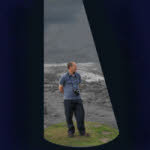Real-life stories: wartime children and African safaris
Christine Reason, a wartime child of WW2, twice evacuated, then on to romance, marriage and self-employment. 1930 to 2019. Working for the British Government on African Safaris in the 1950s and 1960s.Fires in caravans, crawling caterpillars in a line, a dog in a bar likes a tipple, marbles as gifts, no brakes on a cliff…
[1] 1930s Earith National Fishing attraction
Earith National fishing attraction: Every year they’d ring direct to mother because they lived well with us, you know, home cooked ham and eggs for breakfast, mainly from the North- Lancashire people. Coach loads used to come to Earith from places like Nottingham and Sheffield to do fishing…
![[1] 1930s Earith National Fishing attraction 4 John Wales on holiday with 8 family members.](https://notmanywise.uk/wp-content/uploads/john-holiday-min.jpg)
[2] Old bridges at Earith
Here is a picture of the Earith Suspension Bridge – known then as the Earith High Bridge… Below is the old Seven Holes Bridge at Earith where there were seven sluices. The modern sluice now stands at the same location…
![[2] Old bridges at Earith 8 The Seven Holes Bridge at Earith.](https://notmanywise.uk/wp-content/uploads/earith-bridge-min.jpg)
[4] 1930s Pubs in Earith an evocative walk
1930’s Pubs in Earith, there was a lot! Earith was well served with Public Houses. Beer was brewed on the premises and many people supplied their own tankard, which was kept at their preferred public house. ‘The Anchor’ (situated near the pond) was kept by Walter and Violet Broughton…
![[4] 1930s Pubs in Earith an evocative walk 9 A Black Bull pub sign.](https://notmanywise.uk/wp-content/uploads/2012/02/black-bull.jpg)
[6] 1930s St. Mary’s Bluntisham cum Earith Church graveyard
On my evocative Earith walk I remember Derek Broughton’s 8 year old brother got knocked over by the only car in the village, broke his leg and went to hospital and then died with Meningitis whilst still in there. I can remember standing on George’s corner and Lew provided his lorry. It was covered in…
![[6] 1930s St. Mary's Bluntisham cum Earith Church graveyard 10 St Marys Churchyard, Bluntisham.](https://notmanywise.uk/wp-content/uploads/st-marys-min.jpg)
[8] Earith Bonfire and fireworks – before health and safety!
Arthur Thoday who had three young men, sons still at home, he was very keen, he always made the Guy to put on top of the Earith bonfire and Mr. Russell also had three sons kept the shop that sold fireworks and he was a bigger kid than all of us he was always trying…
![[8] Earith Bonfire and fireworks – before health and safety! 11 Lighting a firework on the ground.](https://notmanywise.uk/wp-content/uploads/lighting-fireworks-min.jpg)
[9] Flooding in Earith in the 1930s
As children we used to have a great time down there (Earith flooding: the Causeway) when the water was only about, say, a foot deep and the cars used to try and get through and they’d get stuck…
![[9] Flooding in Earith in the 1930s 12 Two girls from John's family standing under an umbrella.](https://notmanywise.uk/wp-content/uploads/johns-family-min.jpg)
[10] At school in 1930s Earith
Lessons with ‘Gandhi’ at school in 1930’s Earith. Before each day’s school the bell on the roof was rung by an older boy and we all lined up in the playground under our respective teachers and filed quietly in. When I was in Standard two we had ink pens to write with…
![[10] At school in 1930s Earith 13 Earith British School for primary school children.](https://notmanywise.uk/wp-content/uploads/Earith-British-School-min.jpg)
[11] 1930s school playground
1930’s school memories: I remember when I was in the infants class Mr Jewson, who lived nearly opposite the playground in the house called ‘Cavendish’ used to go to Mickey Day’s sweet shop and buy a large paper bag full of liquorice Allsorts. He then came to the playground railing and threw the sweets out…
![[11] 1930s school playground 14 Two chickens. 1930s school playground.](https://notmanywise.uk/wp-content/uploads/rooster-g432cd5524_1280-min.jpg)
[12] Earith parades 1936 to 1960
George V Jubilee Day 1936 at Earith. Recreation Field, Earith circa 1938-1939 Conservative Parade circa 1950-60
![[12] Earith parades 1936 to 1960 15 Earith parade with children dressed up.](https://notmanywise.uk/wp-content/uploads/Earith-parade-min.jpg)
[13] Earith farming in the 1930s and 1940s
Jewson’s gave casual work to many villagers, portering wood from barges to their yard. But farming was the biggest Industry (around the Earith area) and with the busy weekly market in St Ives livestock was put on the local train to Somersham and then distributed to local farms by pony and trap…
![[13] Earith farming in the 1930s and 1940s 16 Earith farm work with horses collecting hay.](https://notmanywise.uk/wp-content/uploads/earith-farming-min.jpg)
[14] Huntingdon Grammar School days
Being in the third form of Huntingdon Grammar School we have a fair amount of homework. We have Physical Education twice a week and a games period on Friday afternoons. We play football in the winter, cricket in the summer and in between these two we have cross country runs. In the Physical Education period…
![[14] Huntingdon Grammar School days 17 Huntingdon Grammar School in the early 1900s, now The Cromwell Museum.](https://notmanywise.uk/wp-content/uploads/Huntingdon-Grammar-School-min.jpg)

![[1] 1922 to 1930 my story Christine Reason 1 1916 George Whitehead in army uniform.](https://notmanywise.uk/wp-content/uploads/1916-george-whitehead-min-1.jpg)
![[2] 1931 to 1935 real life toddler story 2 1893 Grandfather George and Grandmother Emma Denny Whitehead](https://notmanywise.uk/wp-content/uploads/2012/03/1893-grndfthr-grndmthr-whitehead1.jpg)
![[3] 1935 to 1937 Daddy’s office 3 1935 George, Winifred and Christine Whitehead seated in Grandmother Whiteheads garden.](https://notmanywise.uk/wp-content/uploads/1935-7-at-Grdmthr-Whiteheads.jpg)
![[4] 1936 to 1938 pre-war story 5 1936 George, Winifred & Christine Whitehead.](https://notmanywise.uk/wp-content/uploads/1936-whitehead-family-min.jpg)
![[5] 1939 my story – war declared 6 1936 Grandfather Rev John Haydon with Christine.](https://notmanywise.uk/wp-content/uploads/1936-Grandfather-Rev-John-Haydon.jpg)
![[6] 1939 to 1940 evacuated to south coast 7 1940 Arch and Rene Ellis with Christine.](https://notmanywise.uk/wp-content/uploads/1940-arch-chris-rene-min.jpg)